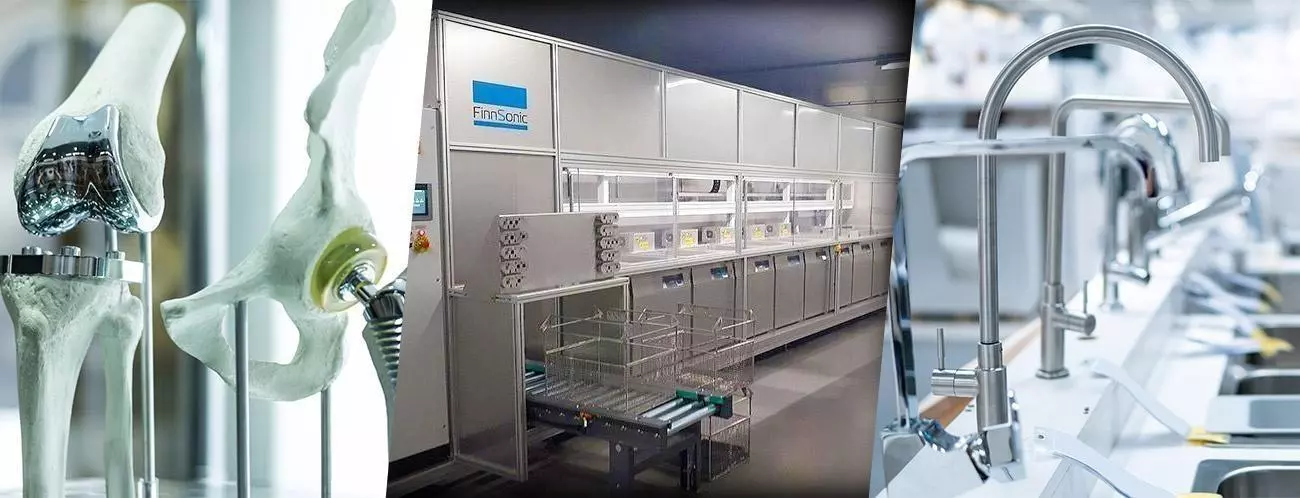Preparation for Physical Vapour Deposition (PVD) Process
Physical vapour deposition (PVD) and electroplating are two common techniques used to produce thin films and coatings. Before these processes are carried out, it is important to ensure that the substrate is properly cleaned and prepared to maximise the effectiveness of the coating. Physical vapour deposition (PVD) is a process in which a material goes from a condensed phase to a vapour phase and then back to a thin film condensed phase. Sputtering and evaporation are the two most widely utilised processes for PVD. This technique is commonly employed in the production of products that necessitate thin films to fulfil mechanical, optical, chemical, or electronic requirements.
Before PVD coating is applied, the substrate needs to be properly cleaned to remove any contaminants that may affect the adhesion of the coating. The cleaning process involves several steps, including ultrasonic cleaning, rinsing and drying.

In mass production facilities, ultrasonic cleaning is the most commonly used method for cleaning substrates before PVD coating. Ultrasonic cleaning uses high-frequency sound waves to create cavitation bubbles in a cleaning solution. These bubbles generate high-pressure waves that dislodge dirt and contaminants from the surface of the substrate. The ultrasonic cleaner system used for preparing burrs before PVD coating is a multi-step process. The first step involves cleaning the parts in a solvent to remove any oils, lubricants or cooling emulsion. The parts are then rinsed in a second ultrasonic bath containing a cleaning solution to remove any remaining contaminants. Finally, the parts are rinsed in a third ultrasonic bath containing deionised water to remove any residual cleaning solution.
After the ultrasonic cleaning process, the parts are rinsed with deionised water to remove any remaining cleaning solution. It is important to ensure that the parts are thoroughly rinsed to avoid leaving behind any residues that could interfere with the coating process. Once the rinsing process is complete, the parts are dried using a drying oven or air dryer. It is important to ensure that the parts are completely dry before proceeding with the PVD coating process. Any moisture left on the surface of the substrate can affect the adhesion of the coating and result in a poor-quality finish.
Surface Preparation prior to Physical Vapour Deposition (PVD) / Chemical Vapor Deposition (CVD)
| Application | Substrate compatibility | Products | pH | Instructions for use | Technical Details |
|---|---|---|---|---|---|
| Oil and grease removal | Carbide / HSS | VACUKLEEN 440 | 13.7 | Conc.: 3-5 % T°C: 50-60°C / 122-140°F Time: 2-5 min | Highly alkaline and non-foaming liquid product, used in ultrasonic and spray processes for the total and rapid removal of oil and polishing compounds. |
| Polishing, grinding compounds removal and oil residues | Carbide / HSS | VACUKLEEN 2018 | 14 | Conc.: 3-5 % T°C: 40-70°C / 104-158°F Time: 2-4 min | Highly alkaline liquid product, for the complete and rapid removal of grinding compounds and light oils, in ultrasonic processes. |
| Polishing compounds and oil residues removal | Carbide / HSS | VACUKLEEN SUPRA | 14 | Conc.: 3-5 % T°C: 60-70°C / 140-158°F Time: 3-5 min | Highly alkaline liquid product, used in ultrasonic processes, for the complete and rapid removal of oil and polishing compounds. |
| Finishing | Carbide / HSS | VACUKLEEN AC | 10.,4 | Conc.: 1-2 % T°C: 50-70°C / 122-158°F Time: 2-3 min | Slightly alkaline liquid product, used in ultrasonic processes, for the complete and rapid removal of polishing compounds. |
| GALVEX 18.07 | 9.2 | Conc.: 0,1-3 % T°C: 40-60°C / 104-140°F Time: 3-5 min | Lightly alkaline liquid, antistatic effect, designed for degreasing and finishing of surfaces, prior to hot air drying. | ||
| Deoxidization | Carbide / HSS | VACUKLEEN 30 | 0.5 | Conc.: 3-5 % T°C: 40-60°C / 104-140°F Time: 2-3 min | Acidic liquid product, used in ultrasonic processes, to remove oxidation and condition surfaces prior to hot air or vacuum drying. |